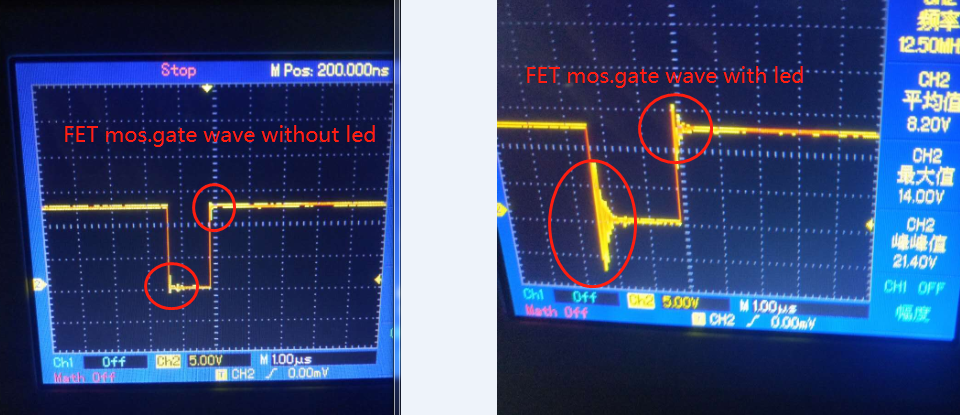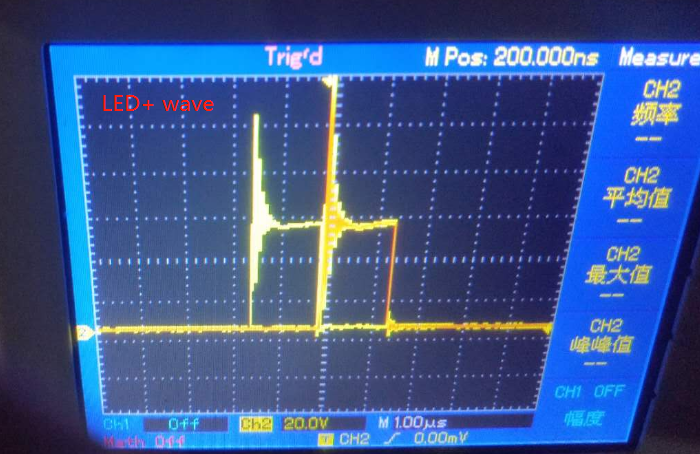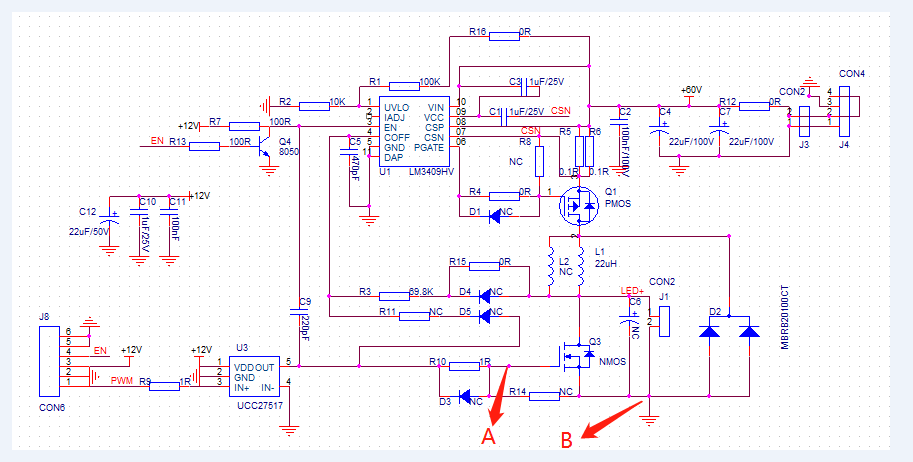Other Parts Discussed in Thread: LM3409
Tool/software: WEBENCH® Design Tools
hello ,I recently tried LM3409 FET dimming again,It was found that the change in lamp brightness did not match the input PWM duty cycle, and there was a sudden change in brightness.
I first check the input PWM waveform,It is found that the load will affect the FET MOS waveform. Is this the reason why the lamp dimming is not soft enough?Is there any way to solve?




